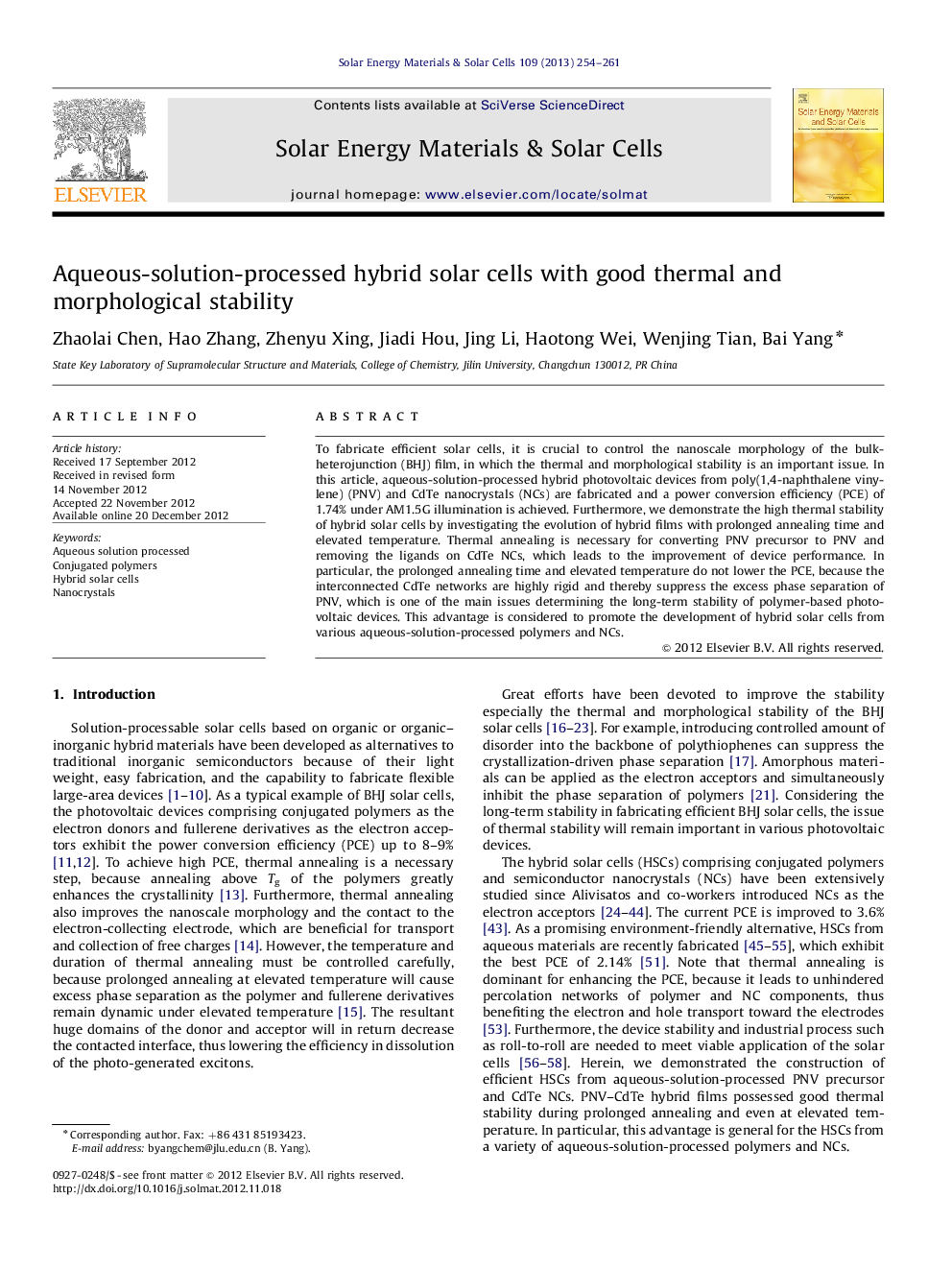| Article ID | Journal | Published Year | Pages | File Type |
|---|---|---|---|---|
| 78442 | Solar Energy Materials and Solar Cells | 2013 | 8 Pages |
To fabricate efficient solar cells, it is crucial to control the nanoscale morphology of the bulk-heterojunction (BHJ) film, in which the thermal and morphological stability is an important issue. In this article, aqueous-solution-processed hybrid photovoltaic devices from poly(1,4-naphthalene vinylene) (PNV) and CdTe nanocrystals (NCs) are fabricated and a power conversion efficiency (PCE) of 1.74% under AM1.5G illumination is achieved. Furthermore, we demonstrate the high thermal stability of hybrid solar cells by investigating the evolution of hybrid films with prolonged annealing time and elevated temperature. Thermal annealing is necessary for converting PNV precursor to PNV and removing the ligands on CdTe NCs, which leads to the improvement of device performance. In particular, the prolonged annealing time and elevated temperature do not lower the PCE, because the interconnected CdTe networks are highly rigid and thereby suppress the excess phase separation of PNV, which is one of the main issues determining the long-term stability of polymer-based photovoltaic devices. This advantage is considered to promote the development of hybrid solar cells from various aqueous-solution-processed polymers and NCs.
Graphical abstractHybrid solar cells from aqueous materials are fabricated and a PCE of 1.74% is achieved. Good thermal and morphological stabilities of the hybrid films are demonstrated.Figure optionsDownload full-size imageDownload as PowerPoint slideHighlights► We fabricate aqueous-solution-processed hybrid photovoltaic devices. ► Power conversion efficiency (PCE) of 1.74% under AM1.5G illumination is achieved. ► Thermal annealing is necessary to improve the device performance. ► Thermal stability of the hybrid films is demonstrated.
